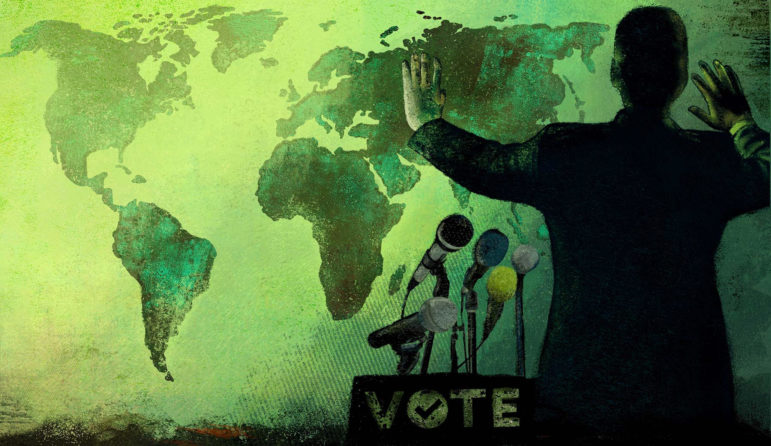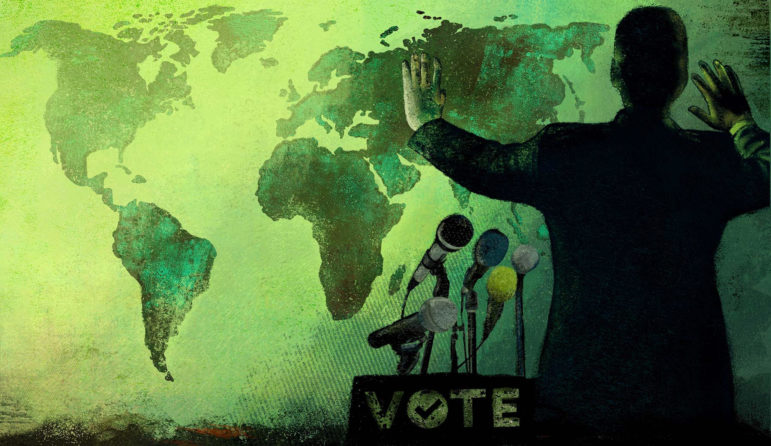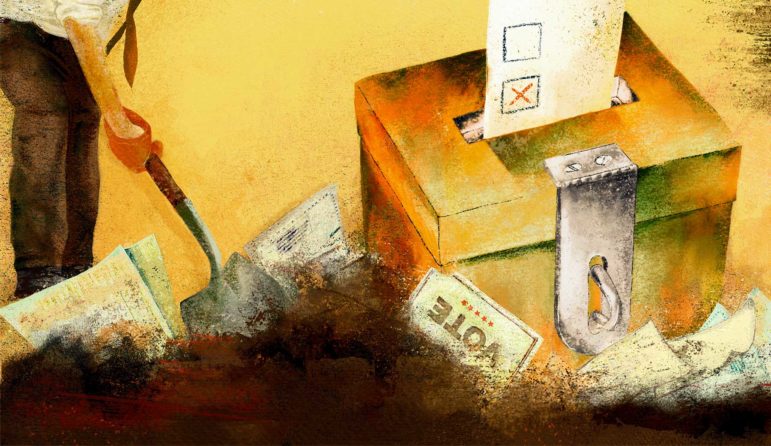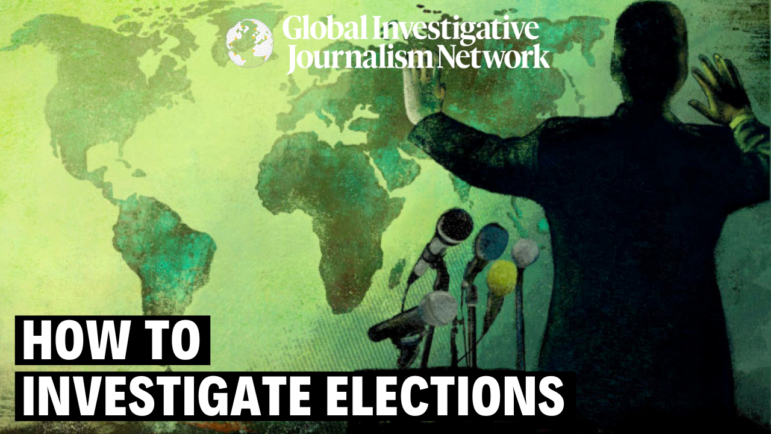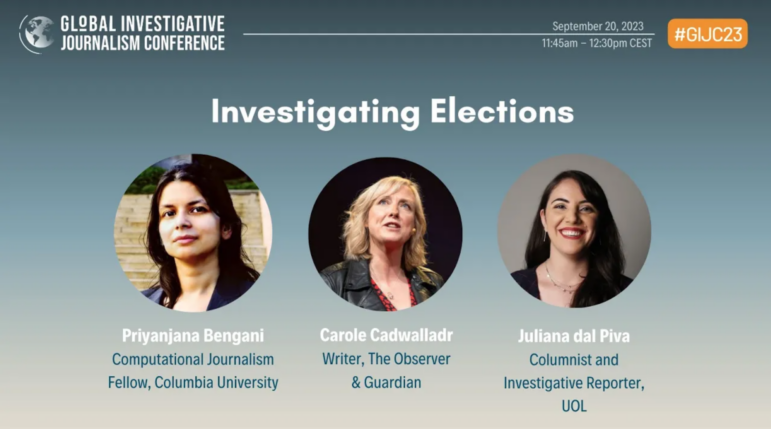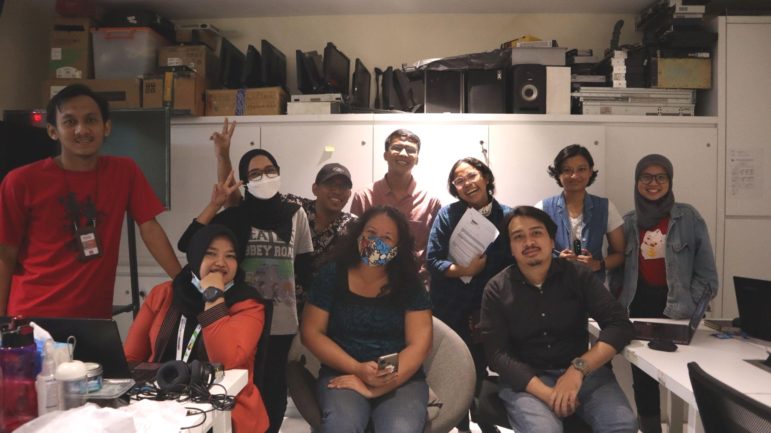

Elections Guide for Investigative Reporters: Chapter 3 – Investigating Candidates
Guide Resource
GIJN’s Elections Guide for Investigative Reporters
Chapter Guide Resource
Elections Guide for Investigative Reporters: Introduction
Chapter Guide Resource
Elections Guide for Investigative Reporters: Chapter 1 — New Election Digging Tools
Chapter Guide Resource
Elections Guide for Investigative Reporters: Chapter 2 — Preparing for Elections
Chapter Guide Resource
Elections Guide for Investigative Reporters: Chapter 3 – Investigating Candidates
Chapter Guide Resource
Webinar: How to Investigate Elections
Chapter Guide Resource
Video: GIJC23 – Investigating Elections
Veteran political journalists warn of a common failing in election reporting: that journalists often believe they already know public figures who decide to stand for national office and tend to assume their previous deals and connections have largely been vetted. They point to examples like the Philippines, India, and Brazil as places where citizens have learned, too late, troubling facts about their elected leaders that were there to be found during their election campaigns. As reporters, we need to dig deeper.
In this chapter, we share some effective tools to unearth candidates’ online and campaign finance histories; tips to connect with people who knew these politicians in their earlier lives; and resources to find hidden assets and red flags. We also share the step-by-step methodology that one leading journalist used to investigate Brazilian President Jair Bolsonaro.
Investigating candidates involves searches for assets, conflicts of interest, criminal connections, past claims, family business networks, foreign entanglements, and many other points of personal history undeclared by their campaigns.
Creativity has proven to be important in successful political backgrounding efforts. In 2016, Serbian independent outlet and GIJN member KRIK produced a comprehensive database of assets owned by politicians and their family members, while also unearthing prior run-ins with law enforcement. The team mined multiple databases for the raw data – and then hired property valuation experts to appraise and contextualize their findings.
In 2012, Pakistani journalist Umar Cheema obtained the national tax numbers of politicians through election commission datasets, and, working with a whistleblower, found that 34 cabinet ministers and more than two-thirds of all Pakistani lawmakers did not file annual tax returns at all. This story led to a dramatic change in financial transparency in Pakistan elections, with politicians now required to contribute their tax information to a public directory that civil society groups and reporters can explore.
Meanwhile, a previously overlooked asset disclosure form from a federal judicial appointment hearing emerged as the catalyst for perhaps the most comprehensive political background investigation ever done: The New York Times’ 2018 exposé of the alleged tax scams behind the business empire of former US President Donald Trump. However, the success of this Pulitzer-winning story depended on the reporting skill needed most in investigating election candidates around the world: convincing total strangers – who are often even more media-shy in politically-charged environments – to speak to you in person.
One creative trick that investigative reporter Russ Buettner used for the Trump project was this: arriving on strangers’ doorsteps with a thick, visible file of junk mail under his arm – the mere sight of which, he found, reduced the anxiety of residents by causing them to believe he already knew all of the core facts. The tactic Brazilian journalist Juliana Dal Piva favors is to leave short handwritten notes – notes stating that you’re seeking the person’s opinion, rather than secrets – under the door of unfamiliar campaign sources. (More on that below.)
Several experts contributed techniques and tools for surfacing historical facts that candidates may not wish voters to know.
Tools for Digging into Candidates’ Online Histories
Use TweetBeaver: Download thousands of a candidate’s Tweets with the TweetBeaver tool into a searchable CSV or Excel file. You can also use the service to download the subject’s contacts list, and find connections by searching for followers of the same account. You’ll need to sign in to this service from your own Twitter account.
Try WhatsMyName: Copy a candidate’s social media handle – from Twitter or Instagram, for example – and plug it into the WhatsMyName app. It will search for that username across circa 600 different online services, including sites unrelated to public service, and niche sites, like interactive game portals. ProPublica’s Craig Silverman warns that additional reporting is required to confirm that the same person, or candidate, is still using that account, but notes that it could be very useful for backgrounding and potentially finding connections outside of politics. For example: the private username of a former president of Moldova – “Kremlinovici” – proved to be the key to an investigation by RISE Moldova, a GIJN member newsroom, that revealed blatant election interference by Russia’s government.
Search the Wayback Machine: Check deleted or altered historical statements by candidates with the Wayback Machine, which archives more than a billion URLs or web addresses per day. Find how to use new features on the service here. Also, try Archive.is to find deleted social media posts and accounts.
Use Who Posted What? This is a trusted tool that gets you around Facebook’s data analysis limits by allowing you to search for posts and videos by date and subject. Its creator, trainer Henk van Ess, says reporters can also substitute the word “posts” in the link created on the site’s search with the word “videos” – or perhaps “images” – to find links in the appropriate medium. It can also find Facebook ID numbers, which you can plug into another tool, graph.tips, to search for posts and photographs from a specific user.
Try using Instagram posts to map candidates’ movements. If the election-related person you’re investigating regularly posts on social media, and has enabled the geolocation function on their mobile device, then you can potentially map their past movements with the Creepy app. An open-source geolocation tool, it can plot the times and locations of Twitter, Flickr, and Instagram posts on Google Maps, and the series of pins it generates can graphically show journeys candidates may not wish voters to know about.
Dig around in Google for connections. To look for associations between a candidate or campaign staff member and another election actor you’re also investigating, enter the name of the candidate in quotes, followed by the term AROUND(17), followed by the other name or term, and you could find documents where those keywords appear within, say, 17 words of each other. (Any number you try between 10 and 25 could work, but ensure there is no space between ‘AROUND” and the parenthesis). To find published interviews with the people associated with the candidate, search for phrases likely to appear in Google – such as “Smith says” – rather than words like “interview.”
Facial recognition software: Search for online photos of the candidate to explore past acquaintances. Most candidates lead a public life before they run for office and will already have numerous photos of their outings online. You might stumble upon photos of them with foreign businesspeople or extremist groups. For more on facial recognition – and powerful tools like Pimeyes, Yandex, and TinEye – read this GIJN article, or this piece, which includes some creative ways to use them in conjunction with Telegram bots.
Finding Contact Details for Campaign Sources
Vetting candidates often involves talking to strangers: reaching out to people who know, or knew, the candidates, or their prior dealings. However, phone books are a relic, and email addresses of potential sources have largely been scrubbed from Google searches in the past few years due to privacy concerns. Reporters need tools to make those approaches.
- Email communication remains the preferred channel for many election insiders around the world. Try to derive the correct email address for the people you need via the Chrome plugin Name2Email, or through sites like Email Format. ProPublica’s Silverman says two plugin tools commonly used by recruiters – SignalHire and ContactOut – can be useful in pulling source contact details that don’t appear on LinkedIn profiles. Meanwhile, the Lusha Chrome extension is a free program that can extract contact information from LinkedIn and Twitter that might not appear on those accounts, and can help reporters reach out to ex-employees of any organization under scrutiny.
- Use Hunter to mine emails from a website, whether that’s a political party’s website or a company the candidate owns or worked at. Hunter gives you 25 free searches per month and offers multiple paid tiers for more searches.
- For reporters covering elections outside of the European Union – which is affected by the privacy restrictions of the General Data Protection Regulation (GDPR) – try sites like Truecaller and Sync.ME for source phone numbers.
- The Pipl Pro people-research tool is expensive – but the stakes are so high in elections, and the tool so powerful, that some newsrooms may consider signing up for a campaign season. BBC cyber sleuth Paul Myers considers the service one of his favorites – and, at the 2019 Global Investigative Journalism Conference in Germany, Myers showed an audience of investigative journalists how, within a minute, Pipl could reveal dozens of contact details and businesses owned by one of the most closely-guarded public figures in Britain.
- Try the LittleSis tool to find connections between political activists – especially in North America. “It’s pretty US-centric, but not exclusively,” says digital sleuth Jane Lytvynenko, who is currently a research fellow at Harvard University’s Shorenstein Center. “It maps connections between key people you might not otherwise have thought about.” She says searching a name in LittleSis can reveal, for instance, that some of the same people involved with Trump’s ‘Build The Wall’ campaign were also involved with his false ‘Stop The Steal’ campaign.
Tools to Check for Red Flags and Hidden Assets
Exposing politicians’ secret assets and financial conflicts – and their efforts to hide them – is, of course, a classic backgrounding story model in elections. See GIJN’s recent toolbox on new methods to find hidden assets; and our guide on investigating money laundering for clues on how to track these moves. In addition, experts suggest the following methods:
- Try a search on the new, user-friendly OpenSanctions database to see whether the names of candidates or their donors have appeared on economic or travel sanctions lists, or are linked to foreign dictators, or terror organizations. Including the names of more than 140,000 people with access to public funds and 24,000 sanctioned individuals, OpenSanctions also allows reporters to cross-check for conflicts of interest with larger databases.
- The Aleph archive, built by the Organized Crime and Corruption Reporting Project, represents one of the most powerful follow-the-money backgrounding tools available. With data on 150 million entities, and offering excellent data scraping and secure data-sharing features, Aleph is an outstanding tool for connecting political power players with hidden money.
- Check the OpenCorporates database of leaks and datasets to explore politicians’ business interests. The open database includes ownership information on more than 100 million corporate entities. Lionel Faull, an investigative reporter who has followed money trails throughout Africa, recently described OpenCorporates as an effective “one-stop-shop” for corporate data that can flag businesses in jurisdictions far from the focus of the investigation. He recommends using it in combination with Aleph.
- Consider the Nexis Diligence tool, which can mine vast global troves of public records, watchlists, legal sources, sanctions archives, and ‘politically exposed persons’ lists for risk-related histories of election actors. The ‘Person Check’ function offers a powerful due diligence magnifying glass for individuals. While the various advanced data and analytics LexisNexis services – which have several applications for elections digging – involve significant subscription costs, the platform is journalist-friendly, GIJN members enjoy reduced rates, and many reporters who can’t afford the fees either use the service via terminals at some university libraries that do subscribe or ask research librarians for database advice.
- For US elections – and, potentially, for clues on international dark money donors – OpenSecrets is an excellent, searchable database on campaign finance and lobbyist contributions from the Center for Responsive Politics.
- One tool that could be useful in digging into mysterious companies associated with election campaigns is Whoxy, which can help identify the person who originally registered the website of proxy companies.
- If your country doesn’t have freedom of information (FOI) laws, identify foreign governments that your subject candidate has some history with, pick out the countries from this list that do have those laws – and file FOI requests to those governments. (Check out GIJN’s guide to FOI laws and procedures around the world.)
A Methodology for Investigating Candidates
Brazilian investigative reporter Juliana Dal Piva – a columnist for the UOL news platform, and formerly a reporter at O Globo – has arguably dug deeper into the secret dealings of authoritarian Brazil President Jair Bolsonaro, his allies, and his family members than any other journalist.
Dal Piva’s courageous revelations have made her a target for numerous threats from Bolsonaro supporters, including one from a lawyer that caused her to go into hiding, and, later, to file a civil lawsuit for damages.
Dal Piva says that Bolsonaro was a relatively unknown entity before he won the presidency in 2018. Like many candidates around the world, little was known by the public at large about his background, motives, and alleged conflicts of interest. Her investigations uncovered a web of financial irregularities involving the president and his inner circle.
Dal Piva’s steps for investigating candidates, and their connections, include:
- Assume you know nothing about the candidate, and start your research from scratch. Also, avoid attributing ethical standards to candidates based on their former professions – especially professions with lofty reputations, such as the clergy or the law. “It is a common error that journalists think they know politicians,” she says. “So people don’t go back to the basics, and to the beginning. Who was the first wife; the second wife; where are the kids now? – you can just start with a Google search, but the questions themselves are important.”
- Search for court records of past lawsuits and depositions involving the candidate, and note the names and contact details of both the parties and lawyers involved.
- Create your own biography of the candidate, focusing on family and connections to individuals, groups, financial interests – and the question: Who are they, really? Include facts on their upbringing, religious and ideological affiliations, legal history, and changes of position on issues.

Brazilian journalist Juliana Dal Piva sketches “spider” brainstorm maps — like this one of President Jair Bolsonaro’s connections — when investigating election candidates. Image: Courtesy Juliana Dal Piva
- Sketch a “spider” connections map on a large sheet of paper or whiteboard, with circles for categories like spouses, children, and ex-spouses; allies, donors, and enemies; current and former homes and offices; and businesses and charities. Add detail and connecting arrows as you go. Tech-savvy reporters can also use data visualization software to map these connections.
- Ask the question: Did the candidate build their personal wealth before becoming a politician, or once they were already in office? If the latter, then: To what extent did they benefit from public policies and public funds – and to whom do they owe favors?
- “Ask who are their allies, and who are their recent allies – and, most important, who are their enemies who used to be allies?” she advises. “These will be important people for your investigation.”
- If your country has asset disclosure laws for elected officials, then use online election management portals, if available – or freedom of information requests – to access these documents, and tabulate every asset in its category in a spreadsheet. Look for undeclared assets like vehicles, farms, vacation homes, and company shares – and look out for over-valuations of homes (a technique often used to hide money).
- If your country does not have asset disclosure laws, then scour Facebook and other social media accounts of the spouses of candidates, in particular, for clues about undeclared assets. Liberian freelance journalist Bettie K. Johnson-Mbayo, for instance, says posts by the spouses of politicians offer a potential goldmine for reporters. Dal Piva says that reporters in Brazil – like other democracies – can simply search for data on candidates and their assets via online portals, but that freedom of information requests are often needed to find copies of the original documents.
- Dal Piva warns that some asset disclosure systems do not require candidates to update the value of assets acquired in prior election cycles, so reporters should also consult deeds and land registries, as well as valuation sources, to build an accurate picture of the candidate’s balance sheet.
- Make it easy and safe for whistleblowers to share evidence and leak documents, with calls for “tips” and encrypted communication channels, but take care to consider any partisan motives. Although she does point sources to secure ProtonMail accounts, Dal Piva says campaign whistleblowers in Brazil tend to reach out by phone for in-person meetings. She says most feel comfortable communicating via WhatsApp, and notes that the political idealism of many campaign staffers makes them potential whistleblowers. “Many people within campaigns feel betrayed, or become genuinely alarmed by things they see,” she notes.
- Watch the candidate on several public or street visits – and take note of the low-level staffers who always accompany them. “These people who are with the candidate every day are very important, and know a lot – the driver; the photographer, the staff member who makes the food,” she notes. “You have to make time for walking on the street and introducing yourself in person.”
- Try the note-under-the-door tactic at strangers’ homes. When your knock goes unanswered at the home of a stranger connected to a candidate, try tearing out a notebook page and leaving a short note under their door, or in their mail slot. Dal Piva says these notes should (1) be honest about your role as a reporter; (2) state that you’re “wanting to understand” something; (3) say you’re seeking the stranger’s “thoughts” on an issue, rather than facts, and (4) include your non-personal contact details. Feel free to use phrases like “off the record” or “on-background,” as these sources are likely media-savvy. Wait outside for a few minutes, as you may be invited inside right away. “It’s amazing how many interviews I’ve gotten with these notes,” she remarks.
- Reach out to as many people as you can. “But, if you’re using social media, ensure you have a professional profile that lists your reporting role, so strangers you reach out to know who you are, and that you’re not just a troll,” she says. “I sent 30 or 40 messages to total strangers, and six months later someone finally answered, and it was a very important source. I learned that that person had researched me first.”
Assemble a Good Set of Local Backgrounding Databases
Although the following set of candidate information databases are Brazil-specific, Dal Piva says they could provide clues for reporters in similar countries on what kinds of local databases might be available, and what a strong backgrounding dataset list looks like:
- A good congressional records database, like this one.
- An archive on spending by individual congresspeople.
- A library of documents associated with the Presidency.
- A searchable database that aggregates political FOIA requests.
- A journalists’ database that can match companies with politicians, like this one created by the Brazilian Association of Investigative Journalism (Abraji).
“It’s really interesting to talk to people the candidate fought within prior lawsuits, and those court records also contain phone numbers and email addresses,” Dal Piva says. “But ultimately, to understand the candidate, you have to understand the person – their religion; what they studied when they were young; their motivation for entering politics; everything.”
Editor’s Note: This chapter is part of GIJN’s serialized guide to investigating elections. The Introduction, Chapter 2, Chapter 3, and Chapter 4 to this guide have also been published.
Additional Resources
Elections Guide for Investigative Reporters: Introduction
Investigating Politicians: Chapter 8 of the GIJN Citizen Investigations Guide
Essential Resources for the US Election: A Field Guide for Journalists on the Frontlines
 Rowan Philp is a reporter for GIJN. He was formerly chief reporter for South Africa’s Sunday Times. As a foreign correspondent, he has reported on news, politics, corruption, and conflict from more than two dozen countries around the world.
Rowan Philp is a reporter for GIJN. He was formerly chief reporter for South Africa’s Sunday Times. As a foreign correspondent, he has reported on news, politics, corruption, and conflict from more than two dozen countries around the world.

